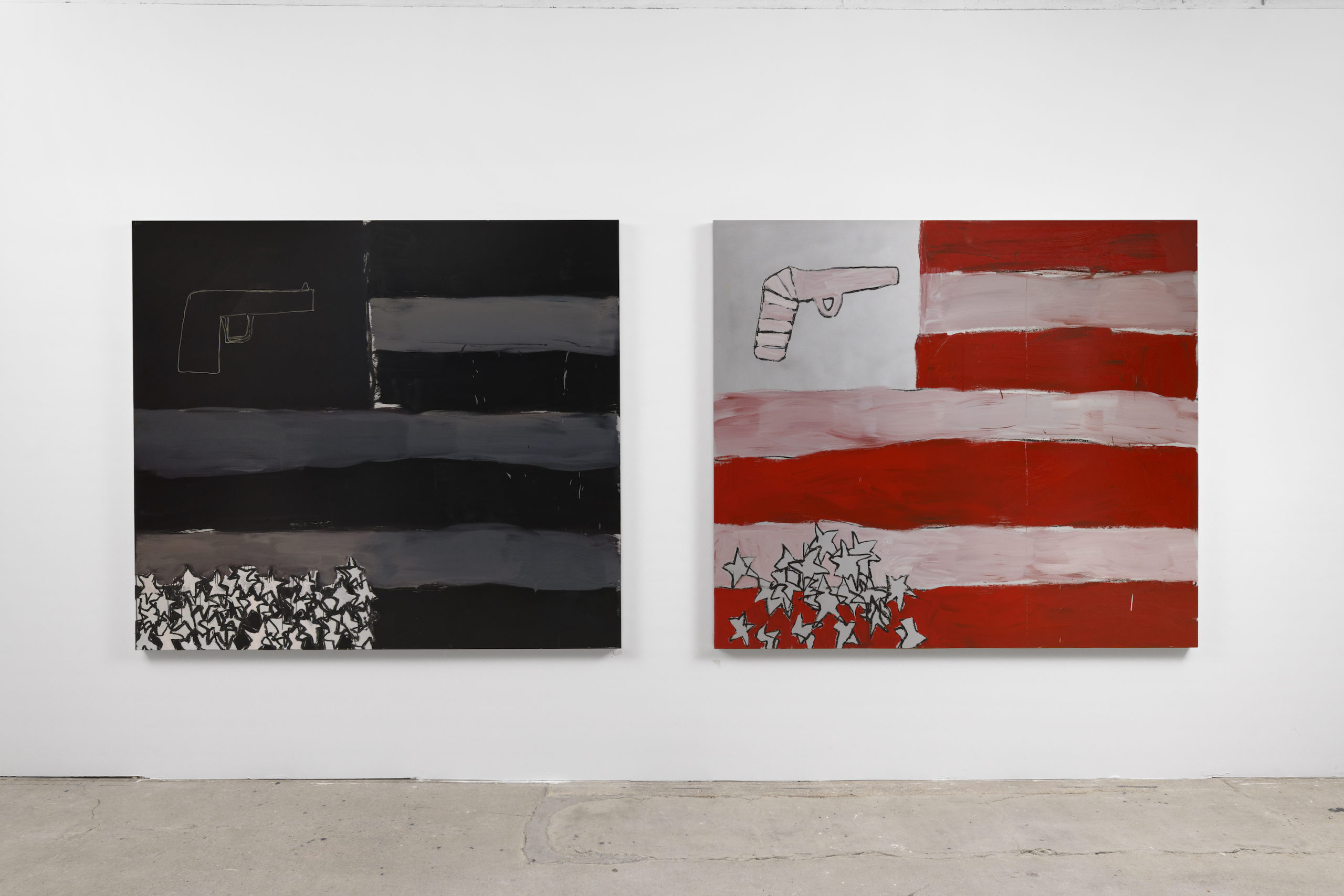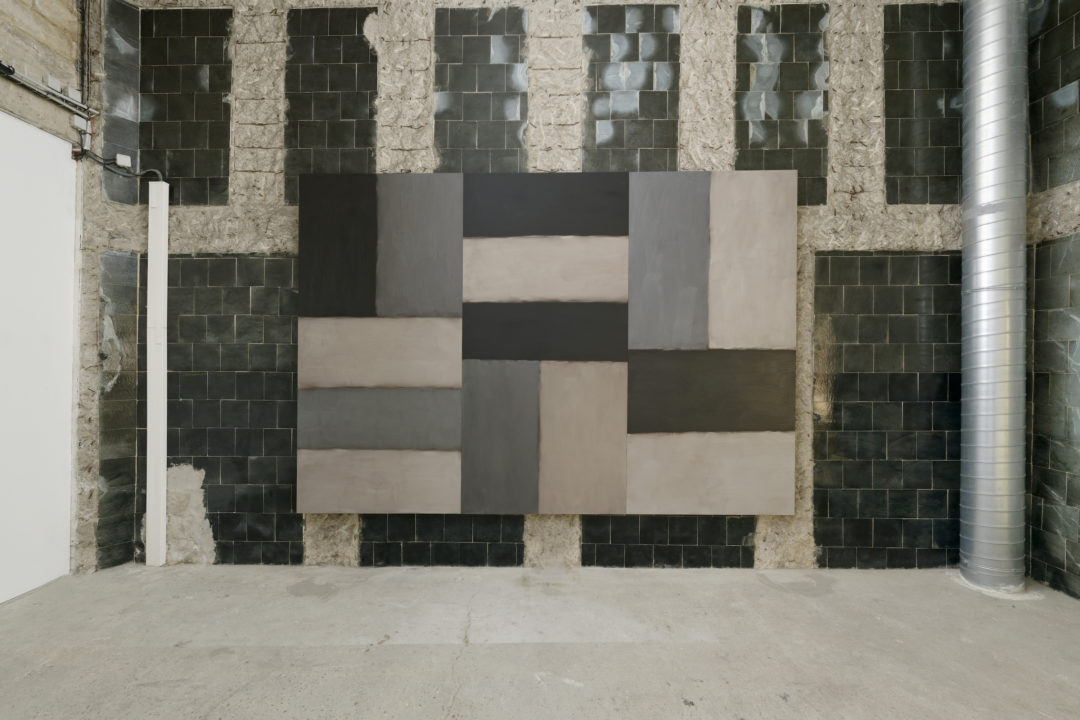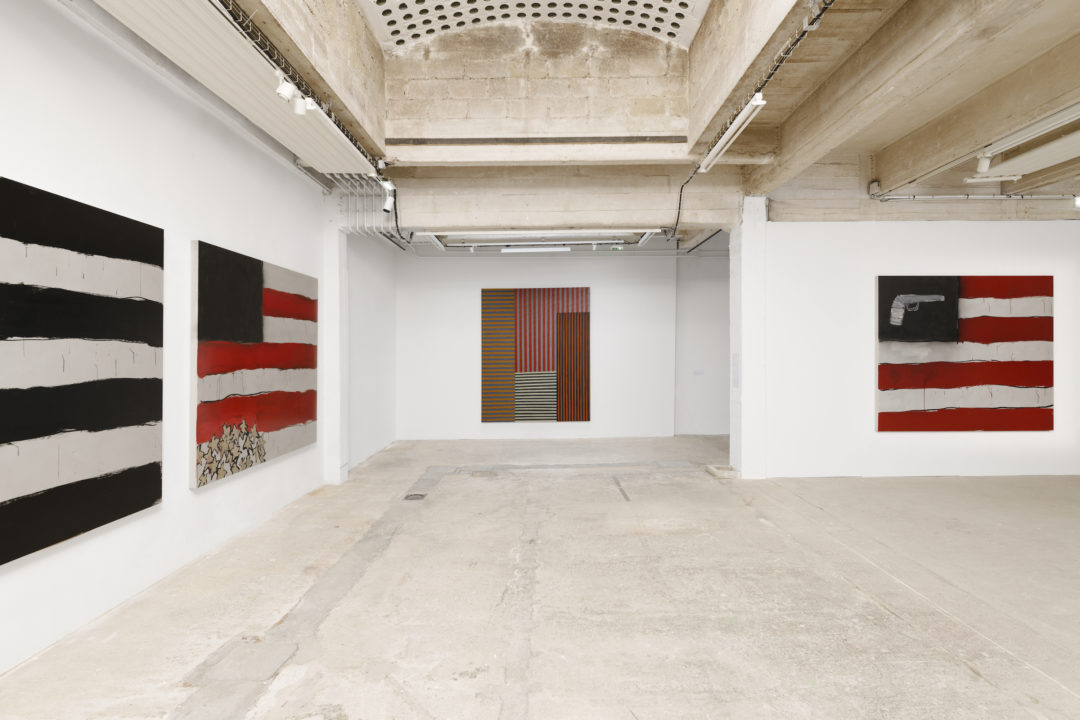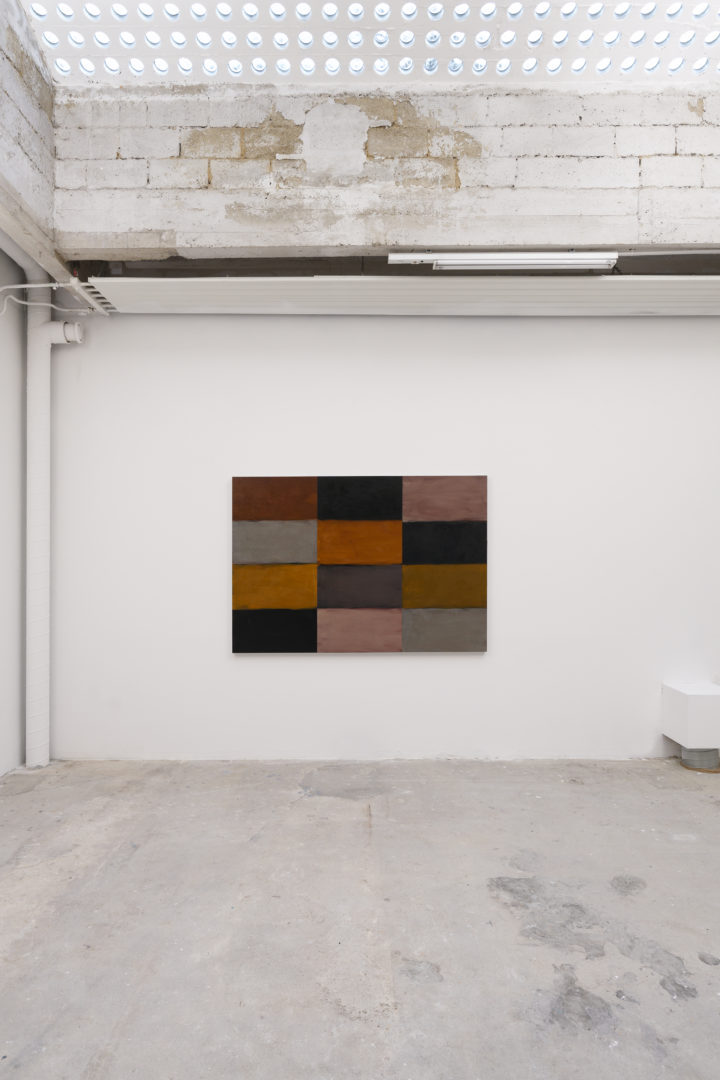Sean Scully

Sean Scully, « Géographies »
Passerelle Centre d’art contemporain, Brest
20.10.2023 – 13.1.2024
It may seem surprising to see an artist such as Sean Scully exhibited in an art centre. Although he is constantly renewing his work, he is far from being able to be described as ’emerging’.
Born in Dublin in 1945, nurtured by the great classics of modern painting, whose works he saw first in the museums of London where he spent his childhood and adolescence, and then in those of New York, where he later immigrated, he belongs more to the twentieth century than to the twenty-first. But in the artistic issues with which he works, he gives us a glimpse of astonishingly sensitive syntheses. Alongside Robert Ryman in particular, he is part of a generation of artists who inherited geometric abstraction but pushed it in a new direction. Scully’s work is an incarnation of abstraction, with as much of the corporeal as the spiritual in art, or, as Jean Louis Schefer so elegantly wrote in the catalogue of the artist’s first monographic exhibition in France, at the Jeu de Paume in 1996, this painting is a “body erased in its figure”.

The exhibition at Passerelle, curated by its director Loïc Le Gall, provides an opportunity to re-enter a body of work that is, in the end, not so well known, and whose singularity reminds us of the extent to which certain geometric motifs are significantly present in reality. It is also an opportunity to appreciate the longevity of his work, since some of the twenty or so pieces on display were produced in the 1970s, while others are very recent. It’s part of the mission of an art centre to bring new works to the attention of a wider public.
In this respect, one of the most striking series presented – the notion of ‘series’ in Scully’s work is very important, and we’ll come back to it later – is Ghost, produced between 2016 and 2018. It is Scully’s farewell to America. He painted these canvases when he came to the irrevocable conclusion that the United States had become unlivable because of the freedom to bear arms. Kids are dying every day. In his work, this anger manifests itself in the re-use of irregular abstract stripes, which he had begun painting long before, here trembling, to represent the ‘Star-Spangled Banner’, with its stars fallen to the ground at the bottom of the painting, and in their place, at the top, revolvers drawn almost naively. In principle, nothing original. Jasper Johns long ago brought geometric abstraction closer to the political symbolism of the American flag. And Jean-Michel Basquiat must have painted small pistols in white on a black background too. But just as Scully had achieved a kind of synthesis in his early work between artists so opposed in their approach as Matisse and Mondrian, with this series he brings together not only the paintings of Johns and Basquiat, but also the critical spirit of Michael Moore’s Bowling for Columbine, the despair of Gus Van Sant’s Elephant and, even if it came afterwards, the death of George Floyd, followed by the Black Lives Matter movement. In a book devoted to this series, published at the same time as the exhibition, Loïc Le Gall also points out the proximity of the paintings to the beginning of Spike Lee’s film Malcolm X, in which the American flag is burnt, alternating with images from the amateur video of the beating of Rodney King by the police. Scully’s abstraction can be extremely virulent.
In any case, it is intrinsically attached to moments and places, if not to people. In an interview with the German art historian Hans-Michael Herzog, Scully explains: “I wanted my paintings to have an individual personality and for this reason I sometimes gave them the names of people or places. In this way, they are rooted in something other than pure art.” Loïc Le Gall drew on this anchoring, and more specifically on the types of links that Scully’s paintings have with the places where they were created, links that go way beyond the usual reference points, to divide them up into periods. In Scully’s work, places are not merely evoked as a source of inspiration or material determination; something that belongs to them is perceptible on the canvas, in the shapes and colours, and opens up our imagination in the way that Proust’s madeleine dipped in a cup of tea conjures up a fantasised past. So, rather than following a chronological sequence, the exhibition is arranged in a series of interlocking universes.
On the first wall, two canvases lead us into Scully’s ‘English’ world. Backloth – a large acrylic painted in 1970 while he was studying art in Newcastle, inheriting Mondrian’s late, quasi-kinetic style, in the same vein as Bridget Riley, for example, with strips of colour impeccably delineated with scotch tape – is in dialogue with Chancery Rents, a small work on paper painted in 1962 in London, during his youth as a poor adolescent, in which modern buildings with orthogonal architecture are depicted at night, like an El Dorado. A little further on, a canvas from 1981, painted in New York and entitled Araby, in reference to a poem by James Joyce, is a monad in itself. A strong attachment to Irish literature, combined with the memory of Islamic decorative abstraction, particularly on fabrics, discovered in Morocco during a trip a few years earlier, enabled the artist to break with his old Mondrian style and, at the same time, with the coldness of the American minimalism that surrounded him at the time. The stripes were now drawn by hand and vibrated. This canvas concentrates the artist’s affective topoi. He is in New York, but his heart is elsewhere.
Another universe opens up with the painting from 2023, Untitled (landline), an oil on aluminium, a technique that creates a powerful surface effect, especially when large brushstrokes are visible. Composed of five horizontal bands of slightly irregular size, in a cameo of dark blues ranging from almost grey to deep turquoise, it can be seen as a meeting between a painting by Michel Parmentier and a seascape – I’m thinking in particular of a beach landscape by Edward Munch, where the geometry translates the perception of the limits between the different depths of water, sea and sky, and then the dazzle ; But it could also be Caspar Friedrich’s Monk by the Sea, in another way of transforming the landscape into a flat tone of colour. This world contains the story of the translation, into painting, of the human experience of the sea, which is Scully’s background.

The warmer colours of another painting immediately transport us elsewhere. Barcelona Robe (2008), also an oil on aluminium, is divided into twelve rectangles of earth, ochre, pink and grey, punctuated by three blacks. It must be that, in Catalonia, the light is so blinding that it becomes obscure, as Matisse already postulated in 1914, when he painted his quasi-abstract Porte-fenêtre à Collioure. In Scully’s paintings, we feel this light, settling on the buildings, on Gaudí’s fantasies, on the earth of the gardens and the tarmac of the streets. It’s clear that he knows the city well, and not just as a tourist passing through the Rambles – he once had a studio in Barcelona. Generally speaking, Scully spends time in the places he loves, which is what convinced Loïc Le Gall to approach his work through its geographies.
But sometimes the places are superimposed with characters, as the 2017 and 2018 paintings in the Eleuthera series remind us. This figurative ensemble stands out both in Scully’s work and in the exhibition. But, on the one hand, the coloured surfaces, the reserved parts revealing the aluminium of the support, the sketched lines, if we look at them in detail, are not so different from the compositional elements of the other paintings as they first appear. And, secondly, the subject matter may suggest why these paintings seem exceptional. In them, Scully depicts beach scenes with her little boy, which have less to do with the seascape mentioned above than with the Ghost series and the concern to protect children. As Arthur Danto analysed in a text on the Catherine Paintings written for an exhibition at the Museum of Modern Art in Fort Worth, Texas, in 1993, Scully sometimes attributed an absolute value to some of her works by linking them to the people who were most dear to her. In the case of the Catherine series, styles, motifs and topologies take second place to a person mentioned after the fact in a title: named by Scully after his wife, the series has brought together, since 1979, works voted by him each year as being the best of his production. These are works that he places in a separate series, in honour of his wife, who is for him an equally special person. This example reveals the nature and function of series in Scully’s work, and more broadly in modern and contemporary art. In his text, Danto distinguishes between series, sequences and suites. According to him, the latter two obey narrative or iconographic grouping principles. Series, on the other hand, involve an intrinsically radical gesture on the part of the artist in deciding whether or not to integrate a work into a whole, a gesture that is recognised by the viewer’s gaze. In the case of the Eleuthera paintings, although the way in which they are assembled is not identical to the Catherine Paintings, which were created as a series after the fact, we can nonetheless assume that they are sacred in the same way, no longer through a reference to the loved one in the title, but through figuration. The beach becomes the place where the love of a parent for his or her child emerges.
The exhibition doesn’t end there; it continues with two abstract compositions featuring rectangles, stripes and grids, colours representative of places. Mooseurach (2002) and Aix Net 1 (2021) trace the artist’s current territory, between Germany, where he teaches, and France, where he lives. Within the exhibition, these two canvases complete the tour by echoing those at the beginning, as if to suggest once again that time for Scully is not linear and that his works cannot be understood as stages or advances. There is another temporality at work in them, one that the principle of the ‘Geographies’ exhibition makes particularly clear, both to those who are already familiar with Scully’s work and to those who are seeing it here for the first time.

______________________________________________________________________________
Head image : Sean Scully, vue de l’exposition “Géographies”, 2023 – Passerelle Centre d’art contemporain, Brest (Fr) © photo : Aurélien Mole
- From the issue: 107
- Share: ,
- By the same author: Peter Friedl,
Related articles
Shio Kusaka
by Sarah Matia Pasqualetti
Julian Charrière: Cultural Spaces
by Gabriela Anco
Céleste Richard Zimmermann
by Philippe Szechter

